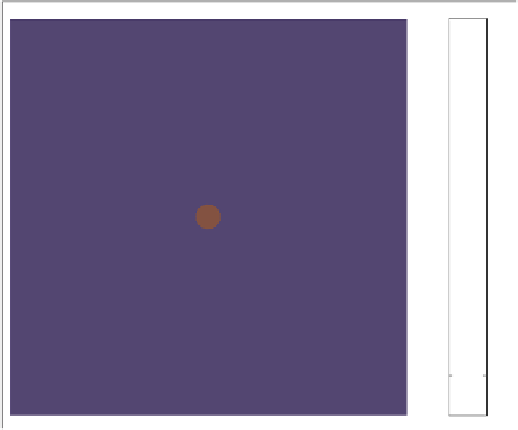Image Processing Reference
In-Depth Information
1
0.9
0.8
0.7
0.6
0.5
0.4
0.3
0.2
0.1
0
Fig. 8.3. The circular region defining a characteristic function
sampled at the vertices or at the centers of a hypercube. This is done by using a suf-
ficiently large hypercube that entirely contains the volume
D
of the characteristic
function, the Nyquist block, which is now defined in the
-domain. Fortunately, hy-
percubic sampling is utilized to obtain discrete images from imaging devices in most
applications, e.g., a scanner, a digital camera, a digital video camera, magnetores-
onance camera, and so on. However, other repeatable volumes, such as repeating a
hexagonal region in a hexagonal manner in 2D, are also possible. The corresponding
interpolation functions can be identified by Fourier transformation of the repeated
volume containing the characteristic function.
The information that encodes the shape of the boundary of the characteristic
function is sufficient to determine the interpolation function in the “other” domain
which can be represented accurately by sampling. In 1D we cannot talk about the
shape of the boundaries because the boundaries are points, which results in the sinc
functions as interpolators when
ω
is a contiguous interval. If it consists of several
juxtaposed intervals, then the interpolation function is expressed as sums and differ-
ences of sinc functions.
In 2D, an extension of a central interval to a square interval results in a simple
characteristic function too. Assuming that it is the
D
-domain that contains the limited
extension function
F
, this leads to the characteristic function
ω
sinc(
πx
)
·
sinc(
πy
)
(8.9)
in the
r
-domain, which is illustrated by Fig. 8.1. Likewise, in 3D the analogous
interpolation function is defined by
sinc(
πx
)
·
sinc(
πy
)
·
sinc(
πz
)
(8.10)











